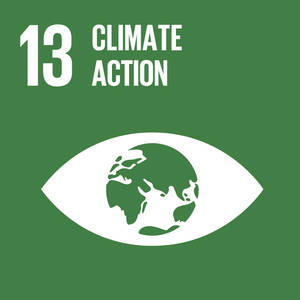Fire is an important factor in the management of many forests, woodlands and other vegetation types. It can be an efficient management tool for clearing land, removing debris and reducing fuel loads, although alternatives should always be considered. Fire can also play an important ecological role, such as in Australian eucalypt forests. Uncontrolled forest wildfire, however, can have severe negative impacts on human health, livelihoods, assets, air and water quality and biodiversity. An estimated 350 million ha of land was affected by fire in 2000, much of it forest and woodland, with a wide range of negative impacts on people and the provision of forest products and environmental services.
Humans are thought to cause more than 90 percent of wildfires, either on purpose or out of neglect. Moreover, increasing temperatures and drought due to climate change are expected to lead to increases in the incidence and intensity of, and the area affected by, vegetation fires. In turn, the greenhouse gas emissions caused by increasing vegetation wildfires may exacerbate climate change.
There is increasing recognition that fire management should involve an integrated approach (“integrated fire management” – IFM) with five key elements (also known as the five Rs): review (monitoring and analysis); risk reduction (prevention); readiness (preparedness); response (suppression); and recovery. In all these elements, forest managers have important roles to play.
Often, wildfires do not stop at the edges of forests, and they may also originate outside forests. IFM, therefore, should encompass other, non-forest land uses and vegetation types, such as agriculture, rangelands, savannahs, peatlands, protected areas and wildland–urban interfaces. Fire management should be integrated in a broad landscape approach that applies the five elements of IFM. In regions where fire is an important management tool, forest managers should use it in a responsible, controlled manner so as to avoid damage to human lives, assets and ecosystems.
Many communities have used fire as a management tool for centuries and have developed considerable traditional fire knowledge and management practices. Such knowledge and practices are valuable resources for IFM and should be the base for Community Based Fire Management Approaches. Searching and applying alternatives for the use of fire, especially in environments with high fire risk can also contribute to fire prevention. In general, all stakeholders should be actively involved in the planning and implementation of IFM strategies, and fire prevention and suppression should be undertaken jointly. Stakeholders include policymakers in the forest and other relevant sectors, forest and other land managers, forest owners, communities living in and close to forests, civil defence services, and fire services.
Local communities are crucial actors; their daily decisions can have major influences on the prevention or occurrence of fires, and they can act quickly to suppress a wildfire. Most IFM activities and efforts, therefore, take place at the local level, requiring what is known as a community-based fire management approach.



